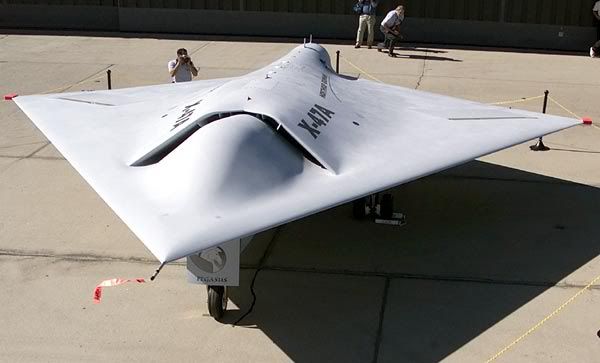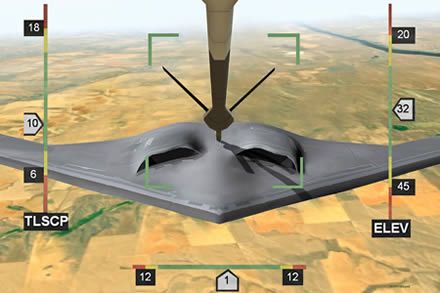Aerial Refuelling For UAVsJuly 7, 2009: Three years after the U.S. Defence Advanced Research Projects Agency and NASA successfully tested a robotic in-flight refuelling system, both the air force and navy are now developing systems of their own. Each service uses a different in-flight refuelling system, and both are going to use the automated refuelling systems to ease the workload of the manned aircraft giving, or getting, fuel.
The original test has an F-18 fighter, modified to operate without a pilot, equipped with new refuelling software and hardware, that was able to successfully refuel in the air. The new air force and navy systems are going to use UAVs (an air force X-45C, and a navy X-47B) to get refuelled. With this capability, a UAV can stay in the air longer, and no longer have to spend several hours returning to base, landing, refuelling, and taking off and returning to its patrol area.
X45c
Both services will used manned aircraft, but under control of the automatic refueling software, to test the systems, before using the UAVs. The navy will use an F-18 as a surrogate UAV first. The air force will use a Learjet, then an F-16 as surrogates, before they use the UAV.
X-47 Pegasus
The in-flight refueling is necessary because unmanned, as well as manned, aircraft can carry more weapons if they can refuel during the mission. For UAVs, such refueling enables these aircraft to stay in the air for days at a time. That's what UAVs are built for. Since fighter pilots have to sleep, and their aircraft are not built for round-the-clock missions, UAVs have a major edge.


